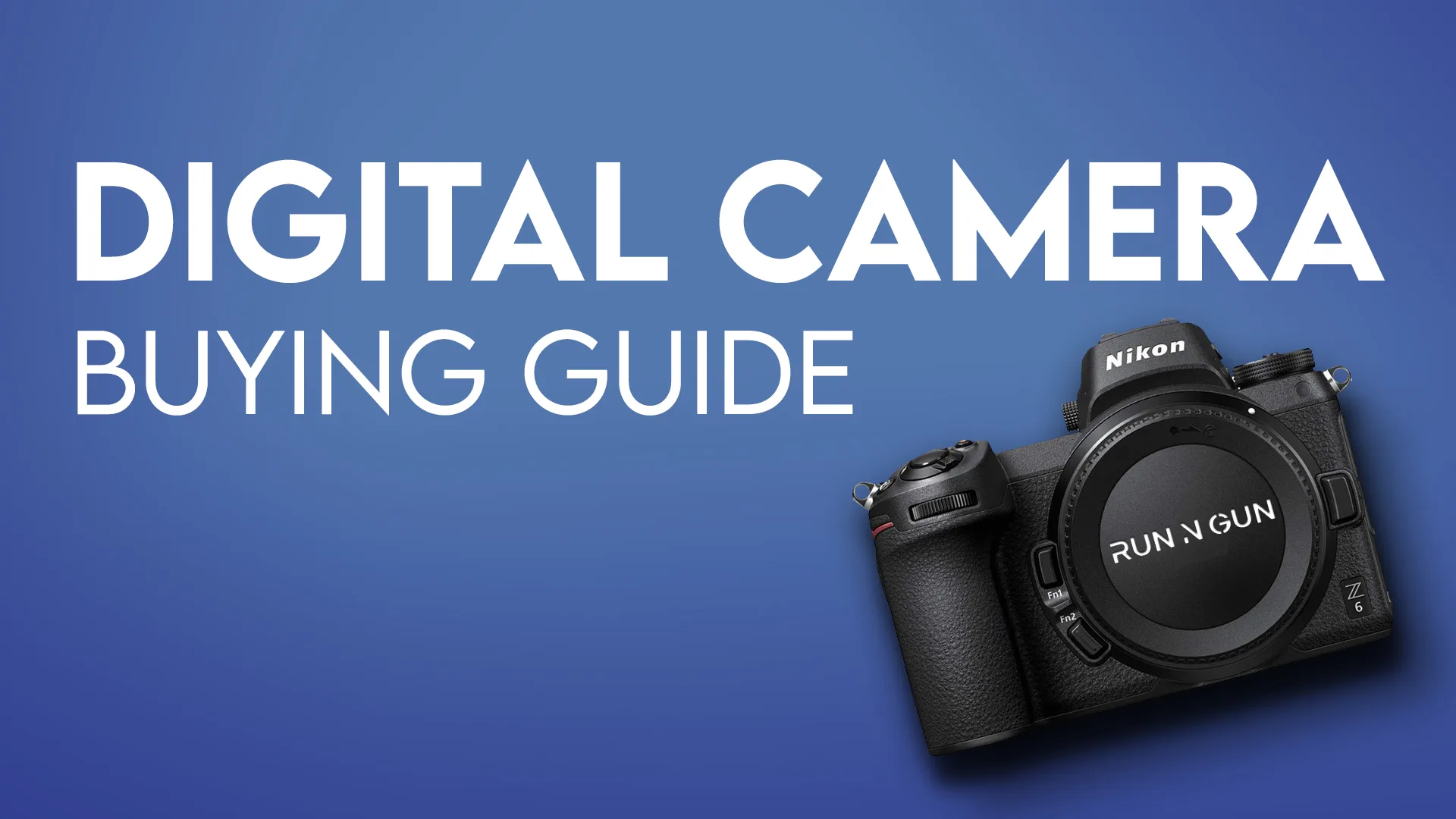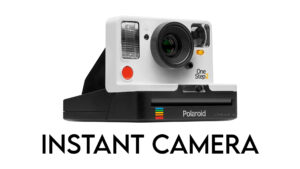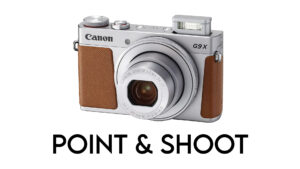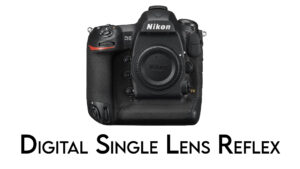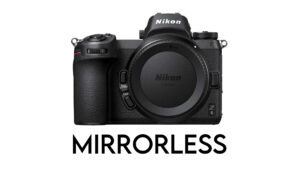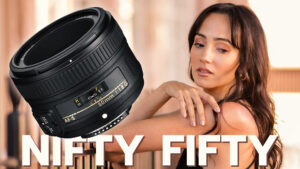Are you looking to buy your first camera? No clue what to buy? You’re in the right place! Buying your first camera can be absolutely daunting. There are dozens of specs to compare, and I can’t promise it gets any easier with each purchase — you just get smarter!
In an attempt to get you started, I’ve assembled a list of cameras at various budget levels. We’ll discuss what options are available in your price-range and hopefully find you the best camera for YOU.
First we need to break down the 4 basic styles of digital cameras you have to chose from: Instant Cameras, Point & Shoot (P&S), Digital Single Lens Reflex (DSLR) and lastly, Mirrorless. So what’s the difference?
Instant Cameras:
The biggest advantage of instant cameras is right in the name. Instant cameras take special film or contain tiny printers and paper that will produce your images right after you snap them. These are fun cameras to have at parties and give you a physical copy of your photograph. The disadvantage to Instants is that the quality isn’t amazing.
Point & Shoot (P&S):
Once again, a camera that takes after its name well. You point it, you shoot it and the camera does the rest! Digital point and shoots aka P&S cameras are known for their automatic settings. No need to fumble around for the perfect exposure, the camera does it all. Now, some of these cameras do have the option of a Manual mode if you’re looking to learn. Their image quality is superior to that of an Instant camera, but biggest disadvantage is the permanently attached lens.
Digital Single Lens Reflex (DSLR):
DSLRs have it all. They are the most versatile of the styles we’ve mentioned so far; all the bells and whistles. DSLRs allow you to shoot in a variety of modes like Auto, Manual and a couple in-between for full control of your images. The lenses are interchangeable and high quality. Most of today’s DSLRs shoot Full-HD or even 4K video as well. So what are the disadvantages? They’re heavier and bulkier than P&S cameras to include the extra lenses you’ll be carrying around.
Mirrorless:
If you haven’t noticed, the guys naming these things are pretty good at calling them what they are. A mirrorless camera is the same as a DSLR — minus the mirror that allows you to look through the viewfinder and see what you’re shooting. So how does it work? Instead of looking through the lens, the digital camera sensor reads the light and displays exactly how your image will look right in your LCD viewfinder! Awesome right? Without the mirror, Mirrorless cameras are thinner and lighter than DSLRS. But there is a disadvantage: shorter battery life than DSLRs.
Now that you understand the 4 basics digital camera categories, let’s take a look at what is available in your price range.
Price Ranges
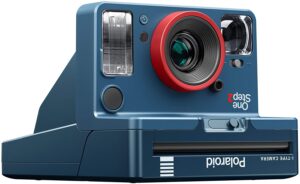
$50 – $100 USD
(Instant Cameras):
Instant cameras are great for beginners, hobbyists and heck, even I have a few Polaroids. These cameras are fairly inexpensive, usually $100 at most, and are the most basic point & shoot (P&S) style that require special instant-film (listed below) that develops or prints your image almost instantly. Here are a few popular instants to take a look at if you think this will suit your needs:
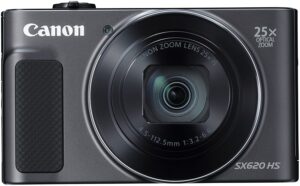
$100 – $250 USD (Digital Point & Shoot Cameras):
A digital P&S is great for when you need the next step up from your phone. I specify digital because 35mm film P&S cameras are really making a come-back as well. This price range is great for first-time camera owners and hobbyists. If you’re looking to get into photography without worrying about manual settings a P&S might be a great start. These are great for testing photography to see if you like it without investing a ton of money. Here are a few:
- Canon PowerShot ELPH 180 ($109)
- Fujifilm FinePix XP130 [Waterproof] ($165)
- Panasonic LUMIX ZS60 ($189)
- Canon Powershot SX420 Kit ($244)
- Canon PowerShot SX620 ($249)
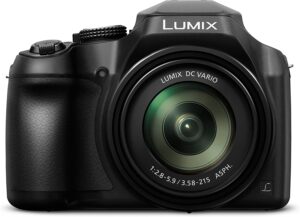
$250 – $500 USD (Mid-Range P&S Cameras + Entry Level DSLRs)
These are more great cameras for beginners. At this level you’ll begin to see P&S cameras with slightly higher resolutions and more features than the previous price level. You’ll also begin to see entry-level Digital Single Lens Reflex (DSLR) cameras. DSLRs will give you the option of Full-Automatic or Full-Manual settings, and other useful shooting modes. DSLRs have interchangeable lenses and are great to start learning Manual settings.
- Canon Powershot SX530 ($299)
- Panasonic Lumix FZ80 Kit ($315)
- Olympus Tough TG-6 Waterproof ($379)
- Nikon D3500 DSLR ($396)
- Panasonic LUMIX ZS100 ($398)
- Canon PowerShot SX740 ($399)
- Canon EOS Rebel T6 – DSLR Kit ($420)
- Canon PowerShot G9 X Mark II ($429)
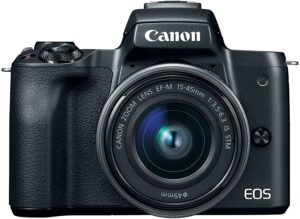
$500 – $1000 USD (Mid-Range P&S, DSLRs and Entry Mirrorless)
This is the next step of mid-range P&S, DSLRs and entry-level Mirrorless camera bodies. Still great cameras for beginners looking to take a photography class. Most photo classes require a DSLR or Mirrorless Camera with full manual capabilities. These are great upgrades from previous budget levels if you’re getting more serious about your photography. Most of these cameras will include video capabilities.
- Canon EOS Rebel SL3 DSLR ($505)
- Nikon D5600 DSLR ($525)
- Pentax K-70 DSLR ($546)
- Canon EOS M50 Mirrorless Camera Kit ($599)
- Sony Alpha a6000 Mirrorless ($648)
- Fujifilm X-A7 Mirrorless ($699)
- Ricoh GR III Digital Compact Point & Shoot ($889)
- Nikon Z50 Mirrorless ($997)
- Canon EOS Rebel T7i/800D Kit (2 Lenses) ($999)
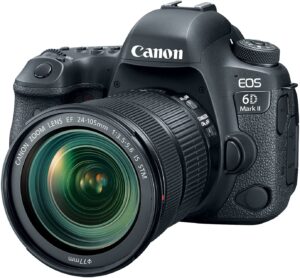
$1000 – $1500
Welcome to higher-end P&S and mid-range DSLRs and Mirrorless cameras. You’ll see some higher Megapixels (resolution), better sensors (low-light capability) and usually the addition of higher quality video modes like 1080P or better.
- Sony RX100 VII (High-End Point & Shoot) ($1298)
- Canon EOS 90D (DSLR) ($1199)
- Sony Alpha a6400 Mirrorless ($1298)
- Fujifilm X100F Compact ($1299)
- Panasonic Lumix GH5 4K Mirrorless ($1398)
- Sony Alpha a7II Mirrorless ($1398)
- Olympus OM-D E-M5 Mark III ($1399)
- Canon EOS 6D Mark II DSLR ($1399)
- Canon EOS RP Full-Frame Mirrorless ($1499)
- Fujifilm X-T3 Mirrorless ($1499)
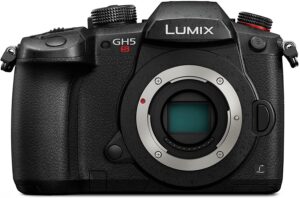
$1500 – $2000 (High-End 4K Mirrorless)
Here are some higher-end “Prosumer” cameras for professionals or usually advanced hobbyists. They’re all great options if you’re getting serious about high quality prints or even starting a photography business. Most of these cameras will shoot great quality 4K video.
- Sony CyberShot RX10 IV (High-End Point & Shoot) ($1698)
- Panasonic LUMIX GH5s Mirrorless 4K ($1798)
- Fujifilm X-T4 Mirrorless ($1799)
- Canon EOS R Mirrorless ($1799)
- Nikon Z6 Mirrorless ($1844)
- Fujifilm X-Pro3 Mirrorless ($1999)
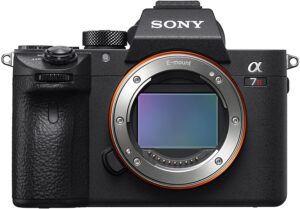
$2000 – $3000 (Pro DSLR & Mirrorless)
This category is high-end camera bodies. If you run a photo business, this is probably what you’re looking for:
- Sony a7 III ($2198)
- Canon EOS 5D Mark IV ($2499)
- Sony a7R III ($2798)
- Nikon Z7 Mirrorless Body ($2844)
- Nikon D850 DSLR ($2997)
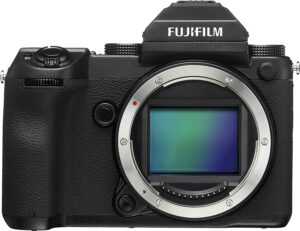
$3000+ (Flag Ship Cameras):
Top of the line or “Flag Ship” cameras. For professional sports, portrait and other high-end photographers and artists with the income to justify the price.
- Nikon D5 DSLR ($5497)
- Fujifilm GFX 50S Mirrorless Medium Format ($5499)
Guide Conclusion
Keep in mind that this isn’t a comprehensive list with every single camera out there. With the current state of imaging technology, you’ll most likely be content with many of the cameras listed here. This guide is just the first step to get you started on your camera-buying journey and see what is available in your price-range. Hope it helps!
Good Luck and happy camera shopping!
** The links above are amazon ‘affiliate’ links, and I do get a tiny commission (pennies) at no cost to you, if you purchase using them. These small commissions help keep the site running. Thank you!

